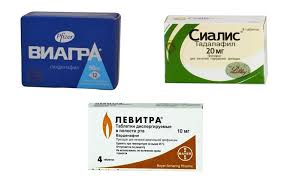lekarnaskupaj.si
Eliquis Understanding Its Uses and Benefits

Eliquis: Understanding Its Uses and Benefits
Eliquis, also known by its generic name apixaban, is a medication used primarily as an anticoagulant to prevent and treat blood clots in various conditions, such as atrial fibrillation and deep vein thrombosis. For individuals who require anticoagulation therapy, understanding Eliquis can be crucial for managing their health effectively. To learn more about purchasing Eliquis online, visit Eliquis https://lekarnaskupaj.si/kupi-eliquis-online-brez-recepta/.
What is Eliquis?
Eliquis belongs to a class of drugs known as direct oral anticoagulants (DOACs). Unlike traditional anticoagulants like warfarin, which require frequent blood monitoring and dietary restrictions, Eliquis offers a more convenient alternative with a predictable anticoagulant effect. This feature has made Eliquis a popular choice among healthcare providers and patients alike.
Indications for Use
Eliquis is primarily indicated for:
- Preventing stroke and blood clots in patients with nonvalvular atrial fibrillation.
- Treating and preventing deep vein thrombosis (DVT) and pulmonary embolism (PE).
- Preventing the recurrence of DVT and PE in individuals who have already experienced these conditions.
How Eliquis Works
Eliquis works by inhibiting a specific factor in the coagulation cascade known as Factor Xa. By blocking this factor, Eliquis effectively reduces the formation of blood clots without the need for regular blood tests to monitor the anticoagulant effect. This mechanism allows for consistent protection against thromboembolic events, making it a preferred option for many patients.
Dosage and Administration
The dosing of Eliquis can vary based on the condition being treated and the patient’s individual risk factors. Commonly:
- For atrial fibrillation: The typical dose is 5 mg twice daily, although it may be reduced to 2.5 mg twice daily for patients with specific risk factors.
- For DVT and PE treatment: The initial dose is often 10 mg taken twice daily for the first week, followed by 5 mg twice daily.
It is important for patients to follow their healthcare provider’s instructions and not adjust their dosage without consultation.
Benefits of Eliquis

Eliquis offers several advantages over traditional anticoagulants:
- Convenience: It does not require routine blood monitoring to ensure the proper anticoagulant effect.
- Fewer dietary restrictions: Unlike warfarin, Eliquis is not significantly affected by food or other medications.
- Rapid onset and offset of action: Eliquis provides quick anticoagulation, which is particularly beneficial in acute settings.
Potential Side Effects
As with any medication, Eliquis has potential side effects that patients should be aware of, including:
- Increased risk of bleeding: Patients should be cautious as Eliquis can increase the risk of serious and minor bleeding events.
- Gastrointestinal issues: Some users may experience nausea or digestive disturbances.
- Allergic reactions: Although rare, some individuals may experience allergic reactions to the medication.
It’s crucial for patients to report any unusual symptoms or bleeding to their healthcare provider immediately.
Precautions and Contraindications
Before starting Eliquis, patients should inform their healthcare provider about their complete medical history, including:
- History of bleeding disorders.
- Severe liver or kidney disease.
- Current use of other medications, particularly other anticoagulants or NSAIDs.
Eliquis is contraindicated in patients with active bleeding disorders and those with known hypersensitivity to apixaban or any of its components.
Monitoring and Follow-Up
While regular blood monitoring is not necessary for patients on Eliquis, periodic follow-up appointments are essential for assessing overall health, renal function, and any potential side effects from the medication. Patients should also be educated on recognizing the signs of bleeding and when to seek medical attention.
Conclusion
Eliquis is a valuable medication in the management of anticoagulation therapy, offering several advantages over traditional options. Its ease of use, along with an effective mechanism of action, has made it a staple in the treatment of various thromboembolic conditions. However, patients must remain vigilant about the potential side effects and adhere to follow-up care to ensure their safety and effectiveness of therapy. For those considering anticoagulation therapy, discussing the options, including Eliquis, with a healthcare provider is crucial for informed decision-making.
